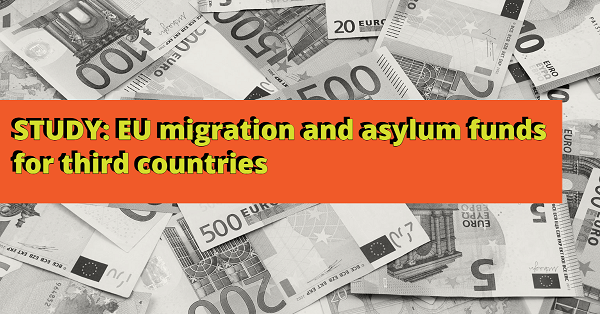This study provides an overview on how EU funding, both from home affairs funds and from the external action budget, have in the past and can currently support asylum and migration priorities outside the EU. It focuses on expenditure during the previous Multiannual Financial Framework (MFF) (2014-2020) and the current MFF (2021-2027) and aims to answer the following overall research question: How can EU migration and asylum funds for third countries be demonstrably more efficient, effective and coherent, including with EU values?
While the overall amount of EU funding dedicated to asylum, forced displacement and migration has increased, the relevant oversight and transparency mechanisms and structures have not followed suit. For instance, based on the information that is available in the public domain, it is not possible to ascertain how much EU funding has been spent in support of asylum, forced displacement and migration outside the EU in the previous funding period (2014-2020). There is no official record of DG HOME spending outside the EU under the Asylum, Migration and Integration Fund (AMIF) and the Internal Security Fund-Borders and Visa (ISF-BV). Similarly, there is no publicly available analysis of the range of asylum, forced displacement and migration-related activities supported by the EU external action budget.
In the absence of official reports, the study looked at relevant datasets, evaluations and reporting documents. However, publicly available data and reports do not usually include the level of detail that would be necessary to analyse how much funding was dedicated to each activity with migration and asylum policies. In response to these limitations, the study provides an overall mapping of available sources for EU funding on migration and asylum in EU third countries.
The study also provides an assessment of EU funding on asylum, forced displacement and migration in the 2014-2020 funding period focusing on transparency, coherence, effectiveness and efficiency and monitoring mechanisms, including on fundamental rights. It provides some detailed analysis of the use of EU funding in two specific country cases, namely Afghanistan and Niger.
It ends with a set of recommendations on availability and transparency of data, coherence, effectiveness and efficiency, monitoring mechanisms and compliance with fundamental rights.
For further information:
- ECRE, Working Paper, EU EXTERNAL EXPENDITURE ON ASYLUM, FORCED DISPLACEMENT AND MIGRATION 2014-2019, March 2021
- ECRE/UNHCR, Follow the Money IV – The use of AMIF and ISF-BV funds outside the EU, November 2022
This article appeared in the ECRE Weekly Bulletin. You can subscribe to the Weekly Bulletin here.

